#Propaganda: Russia State-Controlled Media Flood TikTok With Ukraine Disinformation
2 March 2022
By Ciarán O’Connor
In the lead up to and since the invasion of Ukraine by Russia, there have been numerous news reports and coverage highlighting how TikTok has been used to spread misinformation related to events on the ground.
ISD and others are monitoring the overt and covert methods deployed to push Kremlin disinformation narratives across the internet on an ongoing basis. However, no research published to date has focused on the role of TikTok in the online output of accounts linked to Russian state-controlled or state-affiliated news organisations.
This dispatch offers a first look at how state-controlled media outlets like RT (formerly Russia Today), Sputnik News and RIA Novosti, among others, are using TikTok’s features to spread disinformation that describes Ukraine as the aggressor, frames its soldiers and political leaders as Nazis, and promotes false claims about the conflict. This investigation found that TikTok is more valuable for these outlets in terms of engagement than platforms like YouTube.
_________________________________________________________________________________
State-controlled Media: RT Switches to Conflict Coverage, Sputnik Spouts Disinformation
State-controlled news organisations like RT, Sputnik and RIA Novosti, are active on TikTok and have used the platform to post and promote Russian disinformation narratives related to Ukraine, both pre- and post-invasion. As this analysis indicates, these organisations have made full use of all of all features available to users on the platform.
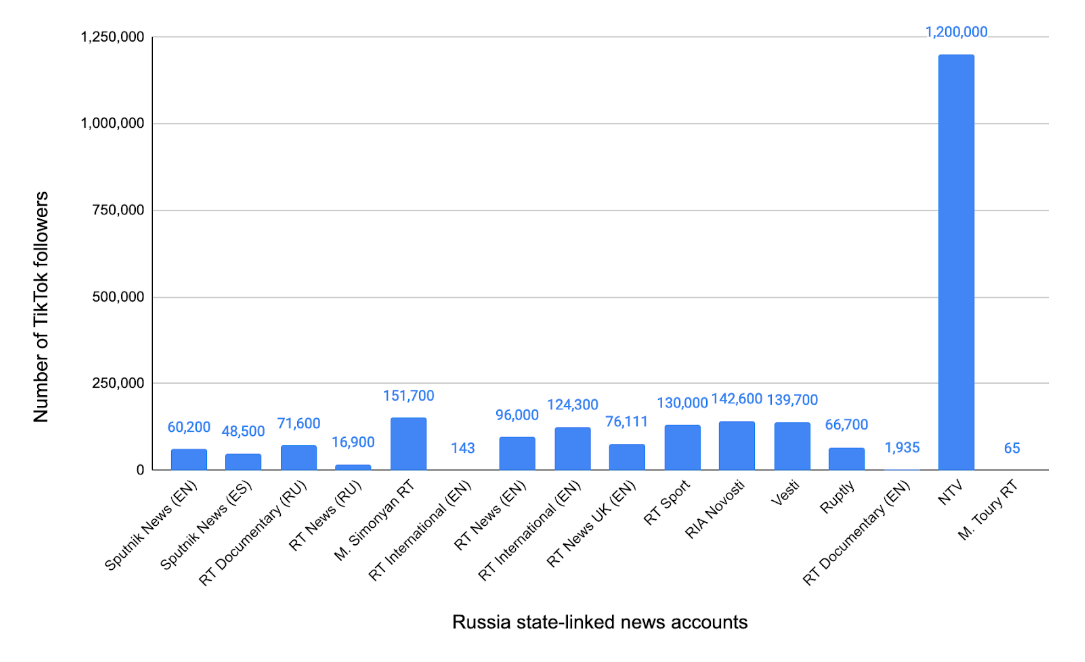
Image 1: Accounts of Russian state-backed news organisations with their number of TikTok followers.
ISD found at least ten accounts operated by RT on TikTok. Until 16 February, one of the most active channels, a Russian-language account with 16,900 followers, was used to post daily one-minute, edited round-ups of RT’s main headlines, with little mention of Ukraine. Since then, the account has changed tack to focus solely on Ukraine content and instead of daily news summaries, is now used to publish individual news clips about Ukraine, including videos featuring remarks from Foreign Minister Sergei Lavrov, Chechen leader Ramzan Kadyrov and conflict footage from Donbass.
One such video features footage which RT claims to show Ukrainian forces setting up Grad rocket equipment within a residential area, which the outlet alleges is designed to provoke return fire on local residents. Following an EU ban on Russian state media on 28 February, all videos on this TikTok account were geoblocked within the European Union.
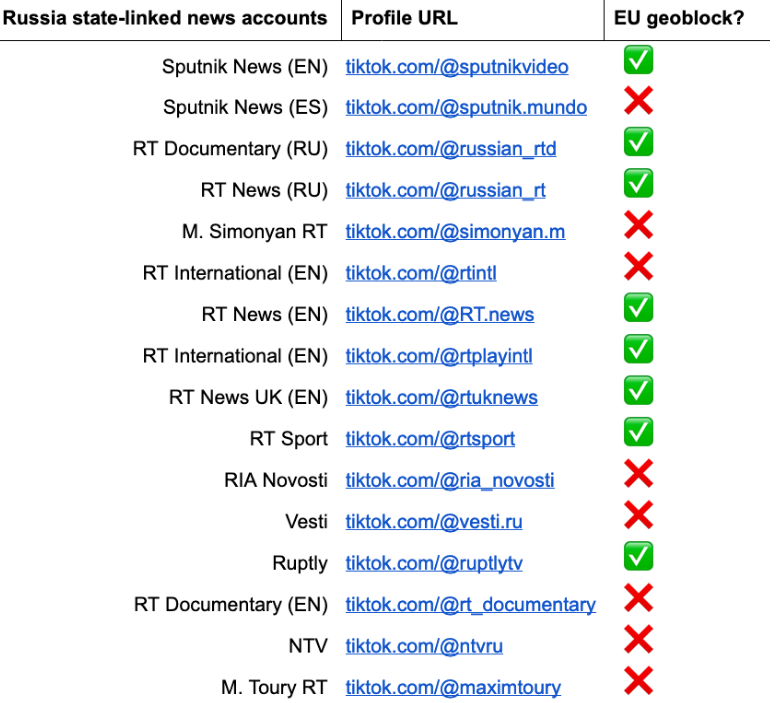
Image 2: The accounts of Russian state-backed news organisations and whether they are/not currently blocked in the EU.
One of RT’s largest English-language accounts, with 96,000 followers, has not completely focused on Ukraine, with recent videos covering US news events such as the populist anti-mandate convoy.
The most popular video from the account, posted on 27 February and viewed 6.5 million times in two days, is a recent post featuring footage of what are said to be Ukrainian soldiers from Snake Island “who laid down their weapons and voluntarily surrendered” and are seen being provided with food and water. The post continues; “the same soldiers were recently reported as dead at the hands of the Russian military, according to Ukrainian President Volodymyr Zelensky.” Another popular video, detailed in a later section, features the opinions of sympathetic (to Russia) American citizens who appear to be indifferent towards the conflict. As of 28 February, this account is also geoblocked within the EU.
Sputnik News operates at least two accounts on TikTok, an English and Spanish-language account, both of which have actively promoted Russian disinformation narratives on the conflict. One such narrative featured in a video on the English-language account includes footage of military personnel from Kadyrov’s Chechen forces preparing to travel to Ukraine to “protect” Donbass, according to the caption. Again, this account was geoblocked within the EU as of 28 February.
The activity of Sputnik’s Spanish-language account illustrates how Russia state-backed media have used popular TikTok features to spread disinformation. This account was not affected by the geoblock. Numerous videos on the account feature a Sputnik presenter using the popular Green Screen effect to appear in front of a still image, while all videos feature on-screen captions and quick edits and feature music, namely the Twenty One Pilots song ‘Heathen’.
One example that makes use of these TikTok features is a 27 February video that claims Ukrainian President Volodymyr Zelensky fled the capital Kyiv for Lviv, citing a quote from Russian State Duma Speaker Vyacheslav Volodin that was also spread by other state-backed media outlets like Tass. The claim is entirely false, as Zelensky himself has confirmed with various selfies and videos confirming that he remains in Kyiv, yet this TikTok video is still live, features no information clarifying it is false, and has been viewed over 1.1 million times.
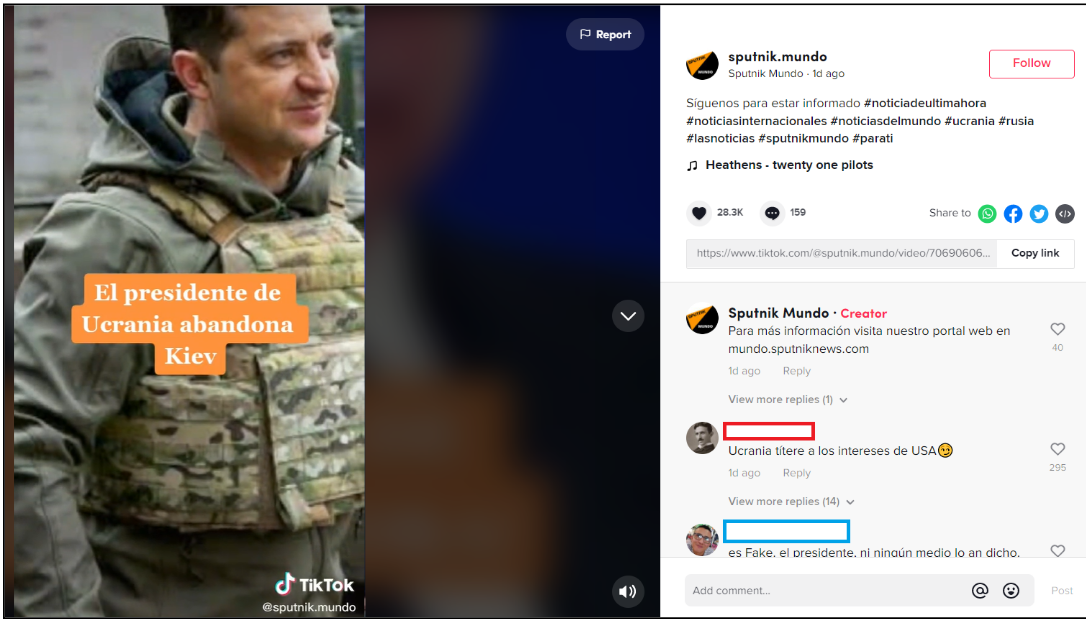
Image 3: Spanish-language TikTok post from Sputnik account claiming Zelensky fled Kyiv.
Kremlin Propaganda Goes Viral: Nazi Claims
TikTok hosts a verified account for Russia Today Editor-in-Chief, Margarita Simonyan, which has 151,700 followers and should be considered as a significant influencer in the pipeline of Kremlin propaganda on the platform.This account was not affected by the geoblock. Much like other Simonyan accounts on Telegram and YouTube, this account is primarily used to post clips of her speaking on RT news.
Among numerous pieces of content framing Ukraine as an aggressor, the central narrative propagated by the Kremlin in an attempt to justify instigating a war with Ukraine, another leading Kremlim can also be found here on Simonyan’s account; that Russia is fighting to eradicate Nazis who control Ukraine (i.e. ‘deNazification’).
A video posted on the account on 27 February featured Tigran Keosayan, the host of a late night satire show on state-controlled NTV and Simonyan’s husband, delivering an enraged rant on TV. Keosayan said this “special operation” [the invasion] had become “unfortunately necessary” because of Ukrainian elites and because of their “silly” decision to establish “an anti-Russia” on native Russian soil. Keosayan added the operation was “aimed at the suppression of bloody Nazis”, for the sake of Ukraine. The video is still live and has received over 2.3 million views in less than 24 hours.
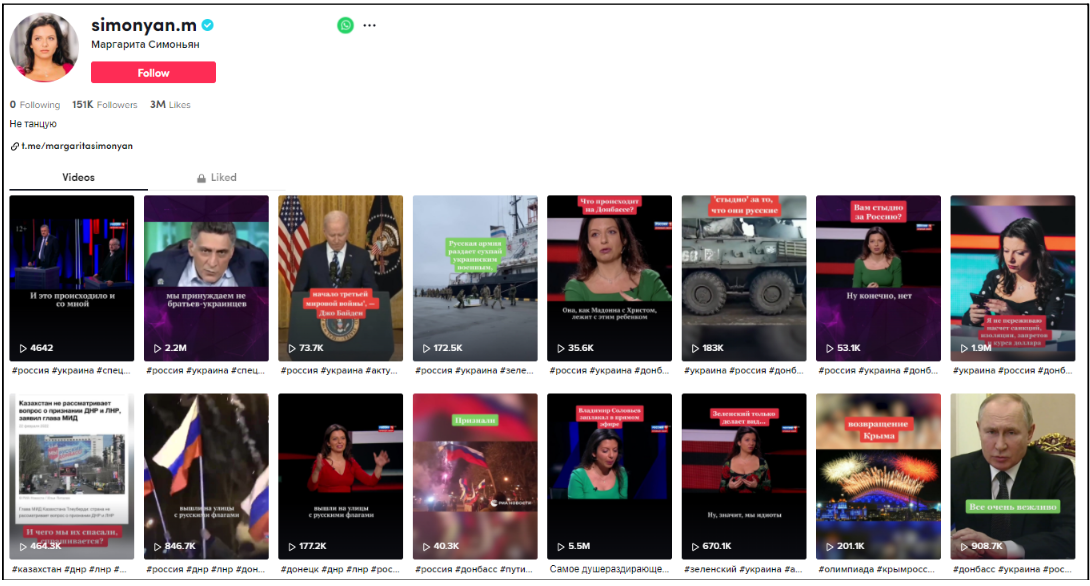
Image 4: Screenshot showing TikTok account for RT Editor-in-Chief Margarita Simonyan.
The reach of Simonyan’s TikTok account compared to similar Kremlin propaganda voices is unparalleled. Between 21 February, the date President Putin announced the decision to recognise the two breakaway republics in eastern Ukraine, and 28 February, 16 videos related to the conflict have been posted on Simonyan’s account, totalling 13.5 million views. During the same period, 21 videos posted on Simonyan’s YouTube account received 3.3 million views, making TikTok a far more valuable platform for the RT Editor-in-Chief.
Highlighting Western Voices
State news agency RIA Novosti is active on TikTok and is another significant pro-Kremlin voice, with 131,000 followers. This account was not affected by the geoblock. A favoured style of news coverage from Russian state media is sharing material from non-Russian voices that support Kremlin positions or President Putin, sometimes achieved by featuring misleading, poorly translated or decontextualised quotes. In this instance, RIA posted a video on TikTok that highlighted comments from Donald Trump at the CPAC conference who said Putin was “smart” compared to President Biden and NATO whom he said were “dumb.” The video has been viewed two million times.
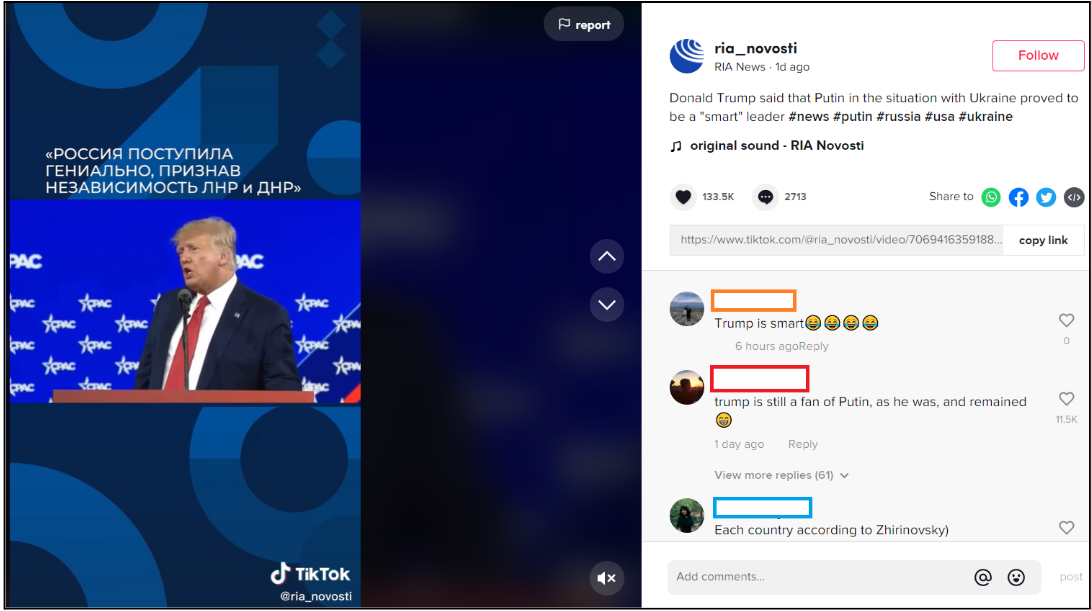
Image 5: Donald Trump’s comments calling Putin “smart,” featured in a video on the RIA Novosti account.
The activity of RIA highlights another way in which state-controlled Russian news organisations have made use of TikTok features to group together Ukraine coverage that is potentially misleading. TikTok users can create playlists of videos that operate like any other platform, yet on TikTok they’re only viewable on the app and not on desktop. In this instance, RIA’s Ukraine playlist features 87 videos, uploaded between 14 January – 28 February, and the title chosen by RIA, “Ukrainian escalation”, offers an insight into their framing of the invasion.
The playlist illustrates just how popular RIA content is on TikTok and how effective a platform it is for garnering exposure for its content compared to other platforms. Analysis shows that the playlist’s videos have been viewed a collective 28.7 million times. In the same period of time, RIA uploaded 462 videos on YouTube which received 26.2 million views, meaning RIA content performs better on TikTok than YouTube.
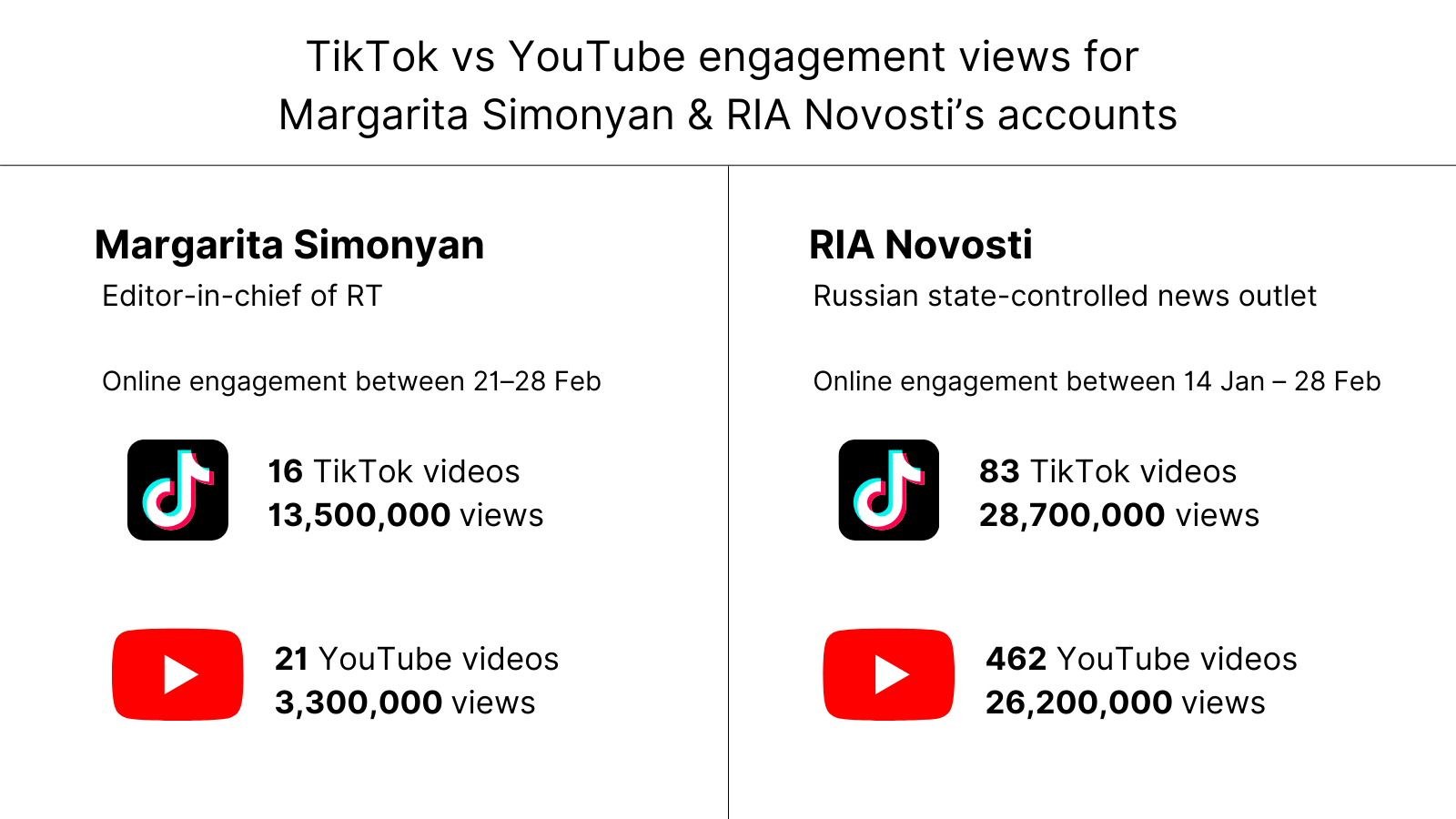
Image 6: TikTok vs YouTube engagement views for Simonyan & RIA Novosti’s accounts.
On the Ground in Donbass
A number of pro-Kremlin media sources are producing content from on the ground in Ukraine. Prior to the start of the invasion, RT’s Arabic correspondent Maxim Toury posted a video from Donetsk in which he spoke about ongoing shelling in the area while Donbass-based media sources have long broadcast press conferences and media appearances from leading figures of the DPR, sharing their claims about Ukraine-backed aggression in the region. Toury’s account was not affected by the geoblock.
One such media source, Donbass Lens, has repeatedly claimed that its videos have been blocked on TikTok, yet numerous uploads have also received over one million views. A video posted on 7 February, which has been viewed 2.3 million times, features Eduard Basurin (a militia official from the Donetsk People’s Republic), who claimed Ukraine-backed Polish mercenaries had arrived in Donbass to carry out ‘acts of sabotage’.
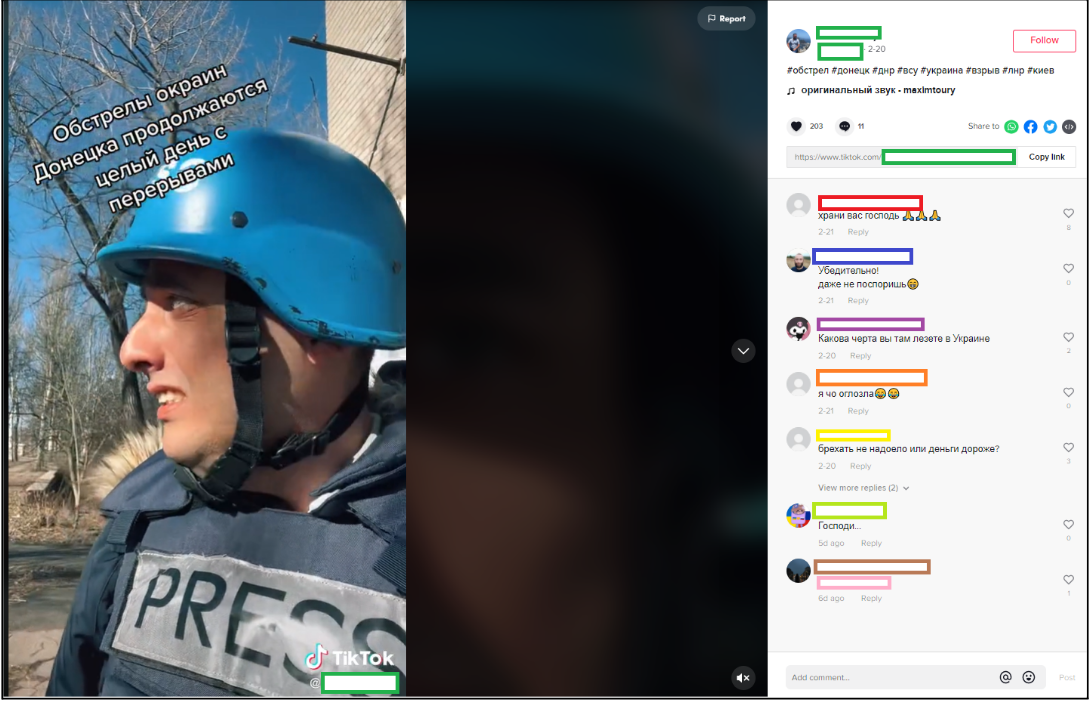
Image 7: RT correspondent Maxim Toury’s TikTok video posted from Donbass.
Similarly, on Telegram on 18 February the press service of the People’s Militia of the Donetsk People’s Republic published footage allegedly showing an operation targeting chlorine tanks near the city of Gorlovka perpetrated by Polish-speaking saboteurs. This was described as a false flag incident by open source investigation organisations like Bellingcat. It’s highly likely media sources like Donbass Lens have used TikTok to contribute to dubious provocations like this aimed at implicating Ukraine before the invasion was announced.
Conclusion
Many social media companies, including Meta, Google, and Twitter, have explicit policies on labelling news organisations and websites funded or controlled by governments. These actions are helpful for informing users that the content they’re viewing or engaging with may originate or be linked to government agencies, including content that may aim to deceive or mislead users.
However, in the case of TikTok, content related to the invasion of Ukraine from Russian state-controlled outlets that are not labelled as such has been allowed to accrue millions of views. These videos often echo Kremlin propaganda, hateful content, and blatant disinformation on the subject of a developing conflict. TikTok is failing to provide additional context or transparency about the bias of these outlets to its users at a critical time.
The examples included here were all discovered and analysed manually. As researchers, we simply do not know the full reach or impact of Ukraine-related disinformation narratives on TikTok as the platform does not offer a gold standard API that would allow for the independent monitoring of the platform at scale, with live or historical data. This lack of API also means that parties interested in mitigating disinformation are unable to analyse all content related to a search query, such as the Ukrainian invasion. Compared to other social media platforms, TikTok’s API does not offer researchers much assistance or capability. In the context of the platform hosting egregious examples of mis- and disinformation related to an ongoing conflict, this constitutes another failing.
At the time of writing, a number of TikTok accounts linked to Russian state-controlled news organisations have been blocked to users in the EU following a 28 February directive by the European Union. Yet it appears these accounts and their content are still available to users in Ukraine, Russia and outside the EU. Even TikTok’s ban of accounts within the EU did not capture all accounts with links to the Russian state. As noted above, TikTok accounts for RT Editor-in-Chief Margarita Simonyan and news agency RIA Novosti have somehow escaped the ban. These TikTok accounts achieve more views than the respective accounts on YouTube and Telegram, highlighting just how valuable they are.
It’s clear TikTok is a crucial part of the Kremlin’s disinformation apparatus. By now there have been numerous news reports and viral posts highlighting how misinformation is receiving attention on TikTok. This dispatch similarly highlights how overt state-backed disinformation is achieving a similarly staggering reach. Outside of comments and replies issued to journalists, TikTok has yet to make any statement on its own site or publicly share any details on steps they’re taking to mitigate against how their platform is actively being used and abused in the conflict. It’s time they took the lead.
Ciarán O’Connor is an Analyst at ISD, working in the Research and Policy unit. Ciarán specialises in using open-source research to track and monitor disinformation and extremism online, with a particular focus on far-right activity and communication across open and closed networks and platforms.
7 March 2022 – Update
Following the publication of this article, on 4 March, TikTok announced in a statement on its website that it would begin to roll out its “state media policy” and “start applying labels to content from some state-controlled media accounts” on the platform, among other points highlighting its response to the invasion. The labels have been added to a number of TikTok accounts seen by ISD. The labels are visible on an account’s videos but not the profile’s grid and the labels read “Russia state-controlled media,” which users can click on to read more.
The notice, seen in the image below, details how the platform determines if an organisation “may be editorially controlled by a government.” The notice also includes tips for what users should do when they see this label, which include 1) Pause and ask yourself about the source’s objectivity, 2) Consider if the video tries to advance a particular perspective and 3) Look at reports from other credible sources.
TikTok added an update to this statement on 6 March which announced that the platform has suspended livestreaming and new content from Russia in response to the country’s new ‘fake news’ law while the platform reviews the safety implications of this law for its users.
Lastly, regarding TikTok’s geoblocking actions against state-backed accounts. As of 7 March, Sputnik’s Spanish-language account has been geoblocked, while all others highlighted in the report above have not.
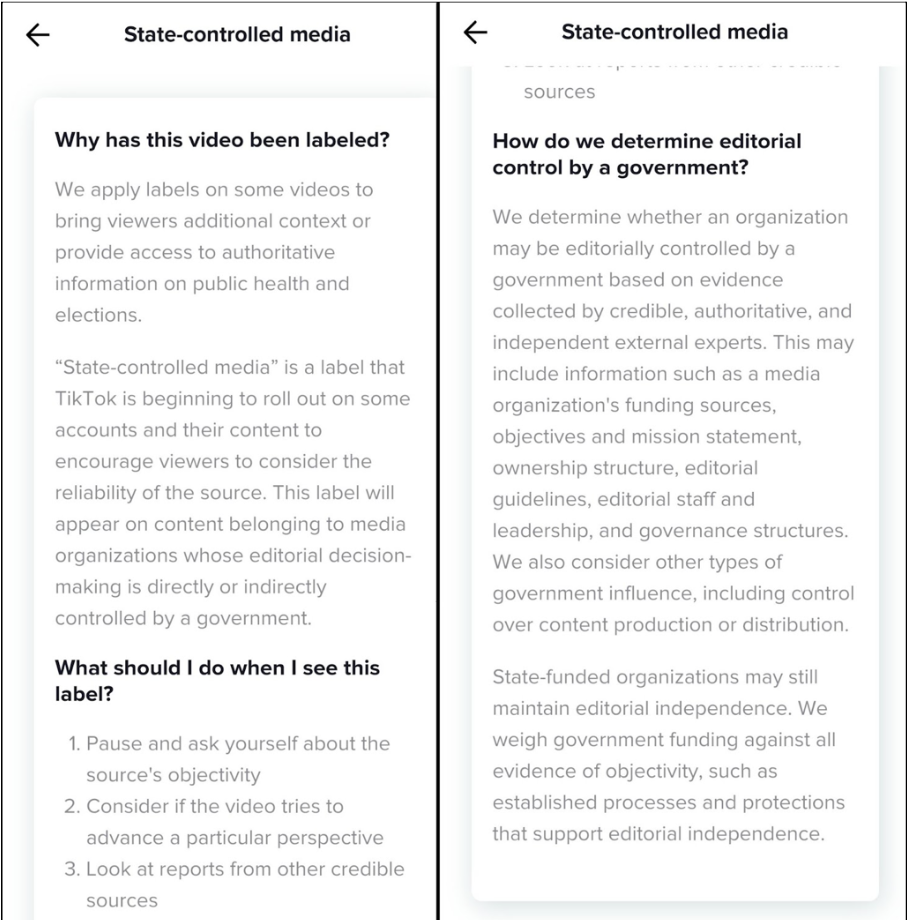
TikTok’s policies on state controlled media.




